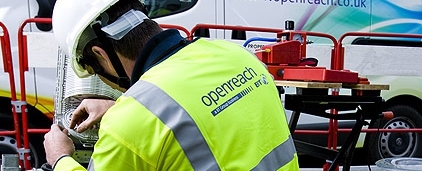
Consumer use patterns and business needs will strain UK broadband infrastructure to breaking point and the government must commit now to 10 Gbps internet for all by 2020.
In a damning report into the Government’s commitment and which set out its members views on necessary reform to delivery adequate broadband to business the Institute of Directors (IOD)
The report said: Internet traffic is growing faster than the ability of the backbone fibre optic network to carry it. A point may be reached in 7 years’ time when consumers may have to be rationed and pay more to access the internet as maximum capacity is reached – a rather unwelcome return to the days of peak and off-peak dial-up access.
But more than these everyday activities, with everfaster speeds, new capabilities and new industries emerge. Virtual reality is set to burst into life this year; high-quality broadband infrastructure is crucial to ensuring that British companies are able to innovate and thrive in new industries that could well be key drivers of economic growth in the future.
The digitisation and automation of transport will require adequate digital infrastructure, but could be revolutionary; self-driving cars could well become reality, Network Rail believe they could increase capacity by 40%, and the National Air Traffic System hope to increase capacity in the air above us by reducing the gaps between planes from 9-10 miles to just 1.
More than three quarters of IoD members believe faster broadband would contribute to improved productivity.
The combination of innovative entrepreneurs and access to finance in the City represents a remarkable ecosystem.
However, London ranks just 12th in Europe on the quality of its ‘digital infrastructure,’ 26th for download/upload speeds and 28th for mobile internet.12 It’s not just the capital. Cambridge ranks as the 11th best city for digital start-ups, but again, lags in digital infrastructure; download/upload speed at 22nd, mobile speed even worse at 31st. It is a similar story in Oxford; 13th overall, but 20th for download/ upload speeds and 32nd for mobile speeds.
Outside the major cities rural areas continue to suffer from extremely poor quality broadband. About 1.5 million premises – a full 48% of all rural premises – are not able to access the 10Mbps. It should be noted that while the price of broadband in the UK remains relatively low by international standards, the cost of communications (Post, Telephone and Internet) has been rising – uniquely, in fact, compared to other major European nations.
BT Openreach
BT continues to dominate the market for fast broadband and the report said there is is no obvious sign of a coming decline. Of consumers upgrading to superfast broadband, according to Ofcom, at least 74% of the upgrades have gone to BT, compared to 40% for all connections.
IoD members, from right across the business spectrum, confirm other studies; some 53% receive broadband provision from BT, and the closest competitor – Virgin Media – sit at 9%.
The IOD said Fibre-to-the-premise is a necessary infrastructure investment.
(FTTP) is for now the highest performing internet connection, and extends a fibre cable from the exchange to individual homes, rather than simply from the exchange to the cabinet. This makes a significant difference in quality. By bringing a fibre cable into the home or office, symmetrical upload and download speeds become available of 1 Gbps with very low ‘latency’ rates (high latency causes buffering, low latency reduces it).
Costs to serve premises have fallen dramatically due to the use of micro-trenching, achieved by using a motorised saw that can dig a shallow trench at a depth of 23 inches in the pavement or road above any other utility connections at a rate of 400 metres per day, the report said.
Today FTTP in the UK is being deployed by CityFibre, Gigaclear, TalkTalk, Hyperoptic, Community Fibre and others. It is also easy to upgrade and maintenance light – only 20-30% of the cost of copper once installed.
The challenge is this: the superfast option being deployed across the UK by Openreach is fibre-to-the-cabinet, which can deliver speeds at up to 76 Mbps depending on the distance to the cabinet. The difference – 1 Gbps versus 76 Mbps – is an extraordinary one. [The IOD report was drafted before last week’s announcement by Ofcom on the future of Openreach.]
In the UK, the penetration of FTTP is just 0.003%, comparing extremely unfavourably with other European countries.
It is worth noting that penetration of FTTP with businesses is much higher – many providers, including BT, offer it to all of their business customers (at additional cost). This is perhaps why some 26% of IoD members have FTTP service, though this falls to 11% in rural areas said the report.






